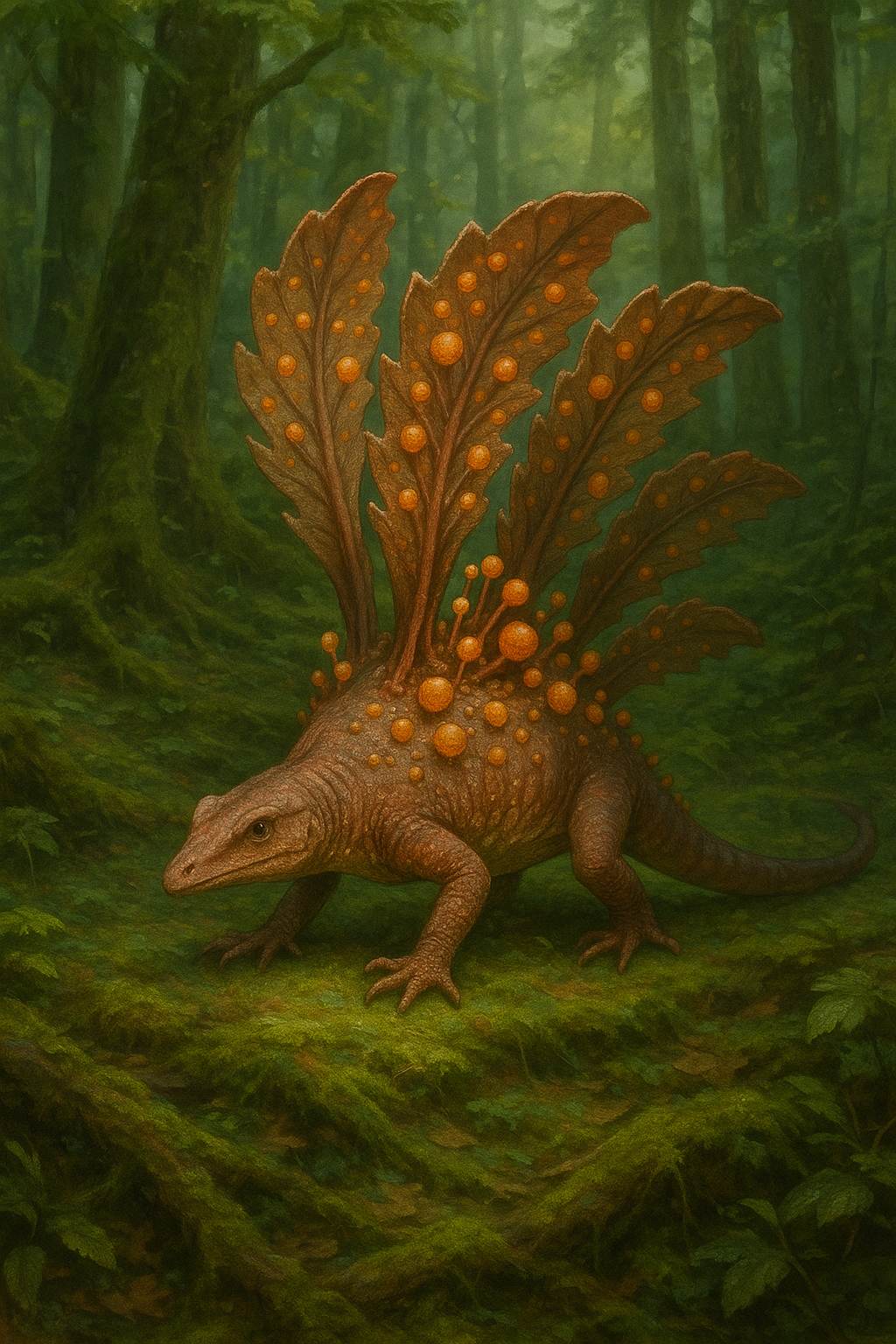Spore-Bonded Vael'kaari
Basic Information
Anatomy
The Vael’kaari’s body is ovular and layered with retractable leaf-like membranes that glow during Alagorian. Six jointed appendages fold inward during Talorian, giving the appearance of lifelessness. Their dorsal ridge contains thin, flexible plates that pulse with soft light when active.
Biological Traits
- Bioluminescent dorsal plates
- Spore-reactive reproductive flanges
- Dormant state mimicry
Genetics and Reproduction
All individuals are female. Reproduction occurs when Kaari’dollan spores enter the Vael’kaari’s internal seed chambers. Eggs are then deposited beneath damp roots near forest lakebeds, where they mature over several weeks.
Growth Rate & Stages
- Larval Pool-Dweller
- Root-Crawler
- Ridgebloom Adult
Ecology and Habitats
The Vael’kaari are native to the forest lakes of central Umbrenor. They are believed to have emerged from a magical convergence of arcane spores and twilight energies after the Great Sundering. Their biology is adapted to the mirrored energy cycles of Alagorian and Talorian.
The Vael’kaari thrives in mossy undergrowth near lakes rich in arcane runoff and decomposing organic matter. They rarely leave the immediate forest-lake biome.
Dietary Needs and Habits
Feeds through nutrient transfer during the bonded state with Kaari’dollan. When unbonded, subsists on decomposing vegetation and fungal blooms.
Biological Cycle
- Dormant in Talorian (appears dead, colorless)
- Active in Alagorian (glows, mates, spawns)
Behaviour
Solitary, with migratory instincts triggered by changes in ambient mana. Emits a melodic hum when in proximity to a potential mate.
Additional Information
Social Structure
Nomadic solitary wanderers, except during convergence migrations triggered by lake mists.
Domestication
Impossible. Vael’kaari require live-cycle exposure and natural environments to survive.
Uses, Products & Exploitation
- Spore oils aid in memory enhancement potions.
- Glowing dorsal plates used for ritual lighting devices.
Facial characteristics
Small recessed sensory pits rather than visible eyes. Jawless mouth membrane only opens during feeding or mating.
Average Intelligence
Low; instinct-driven behavior patterns with limited memory capacity.
Perception and Sensory Capabilities
Vael’kaari sense the presence of their symbiotic mate through fluctuations in temperature, scent trails, and faint leyline vibrations. They are also capable of detecting arcane pulses emitted by the cycle shift.
Symbiotic and Parasitic organisms
Kaari’dollan – essential for triggering reproduction and bonded feeding.
Origin/Ancestry
The Vael’kaari are native to the forest lakes of central Umbrenor.
Lifespan
4–6 Elarian years
Average Height
0.75m
Average Weight
1.1m
Average Length
~12kg
Average Physique
Flexible, low profile, suited for curling and burrowing.
Body Tint, Colouring and Marking
- Alagorian: Vibrant greens, teals, glowing gold veins
- Talorian: Dull grey, desiccated appearance
Discovered by



Comments